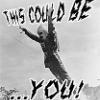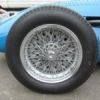At the time, Stromberg was owned by Bendix Corporation, which was headquartered in South Bend IN. I don't know if this model Stromberg carb were manufactured there or at Stromberg's facilities. Bendix was a very large, diversified manufacturing business in the automotive and aerospace - before it was called aerospace - fields, along with consumer products. They were an early developer of computers, avionics, and guidance systems for military and commercial aircraft. From 1931 to 1962 they sponsored the Bendix Trophy, awarded to the winner of a long-distance air race that was generally run over as great a distance as possible from a start point within the US to an endpoint at the location of the National Air Races. The finish of the Bendix race was integrated into the weeklong NAR activities until 1949, after which the NAR ceased to be for 15 years.
Stromberg is of course identified as the popular choice of many early Ford-focused hot rodders. New Stromberg 97 carbs are apparently now being manufactured by a company using the name but not likely associated with the original Stromberg.
The only Bendix Stromberg pressure carb with which I have any experience was the PS5, a single-barrel carb made for opposed-cylinder aircraft engines. It's been twenty years since I had one in my hands, and that was for just a period of hours. Though I may try one on a project I've got in process. A friend who is a Charles Taylor Award-winning A&P describes pressure carbs as "combining all the worst features of fuel injection and carburetors, with none of the advantages of either."














